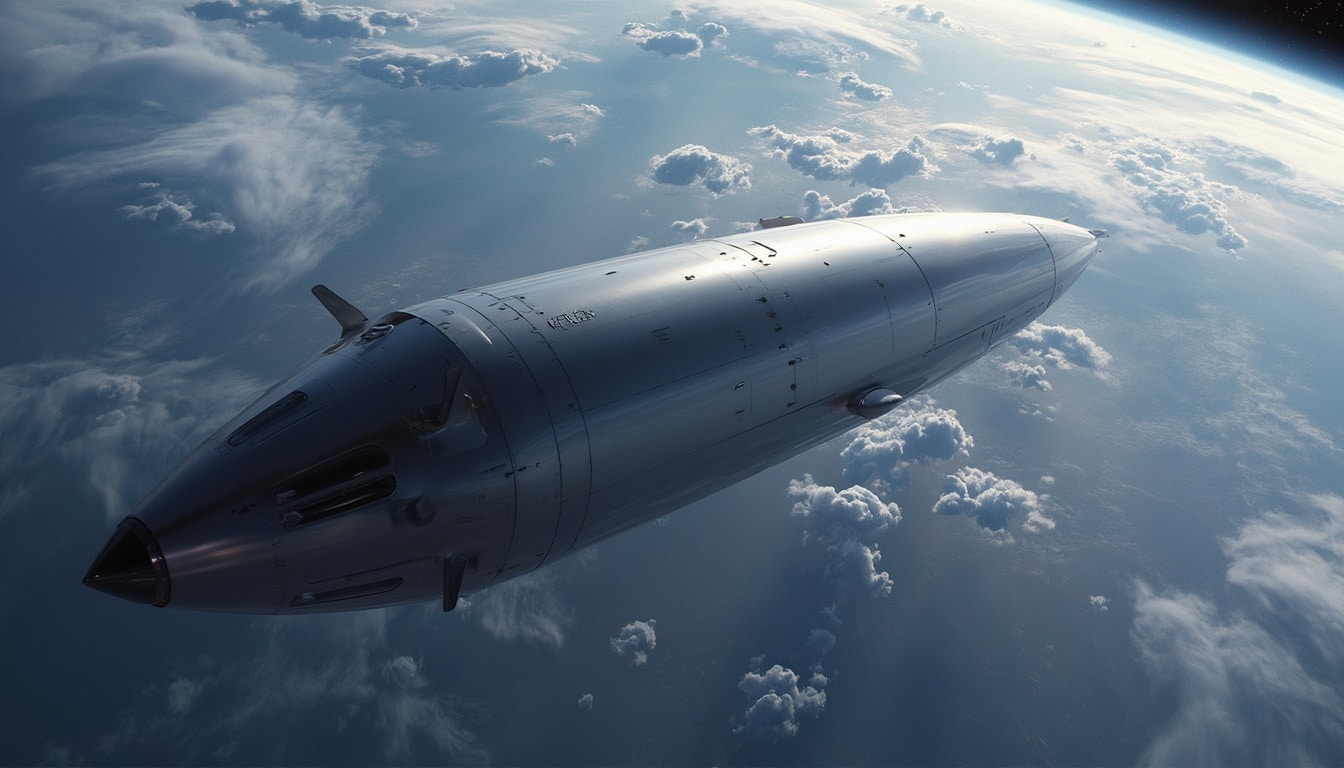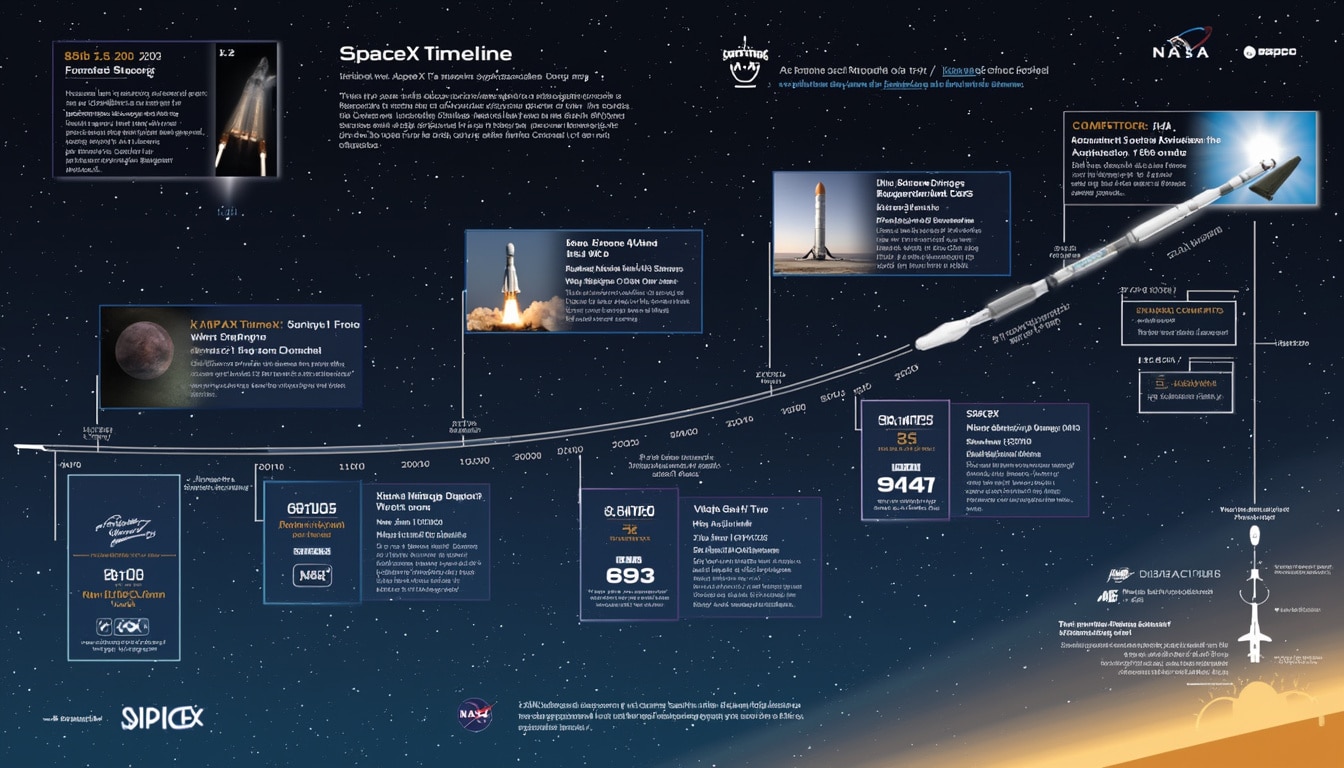The ever-evolving saga surrounding SpaceX and its Starship program continues to capture the world’s attention. In a recent turn of events, the Federal Aviation Administration (FAA) has decided to close one of two ongoing investigations into the company’s Starship flights, while the ambitious rocket remains grounded. This marks a significant milestone for SpaceX as it navigates regulatory scrutiny amid its quest for groundbreaking advancements in space exploration. With the future of interstellar travel hanging in the balance, the implications of this decision extend far beyond the confines of the aerospace community.
SpaceX, headed by billionaire entrepreneur Elon Musk, has been at the forefront of innovation in the field of aeronautics, often pushing the envelope with its ambitious projects, including the highly anticipated Starship. This vehicle is envisioned as the key to making interplanetary travel feasible. However, ensuring safety and compliance with regulatory frameworks has proven to be a challenging endeavor. The FAA’s involvement is paramount, as it plays a critical role in overseeing space launches and safeguarding public interests.
In this engaging exploration, we will delve into the current status of SpaceX’s Starship program, examine the implications of the FAA’s recent decisions, and discuss the path ahead for the aerospace titan and its ambitions in both space and beyond.
Understanding the FAA’s Role in SpaceX’s Operations
The FAA has been a crucial player in overseeing SpaceX’s activities, particularly concerning its Starship projects. This agency is responsible for regulating all aspects of civil aviation, including space launches. The recent announcement of closing one investigation stems from the FAA’s evaluation of potential risks and safety concerns associated with Starship flights. SpaceX must adhere to strict regulatory guidelines to ensure public safety, especially given the potential for mishaps during launch or ascent.

The Challenges of Regulatory Scrutiny
SpaceX’s ambitious goals often clash with regulatory frameworks. Within this context, the FAA’s scrutiny serves both as a necessity for accountability and a potential obstacle for rapid innovation. For a company that thrives on pushing boundaries, regulatory processes can feel cumbersome. The closure of the investigation indicates that the FAA has found sufficient assurance in SpaceX’s compliance, at least in part, allowing the company to refocus its efforts on future projects.
Nonetheless, the remaining investigation reflects ongoing concerns about safety protocols and the environmental impact of launch activities. As the world becomes increasingly aware of climate change and environmental preservation, aerospace companies like SpaceX need to reconcile ambitious technological advancements with sustainable and responsible practices.
Impact on SpaceX’s Projects and Schedule
The ground halt of SpaceX’s Starship, while troubling for the company’s timeline, has not completely stunted its momentum. The closure of one investigation signals a potential pathway for the company’s future operations. SpaceX’s design ethos relies on iterative development, where testing failures are crucial learning opportunities rather than setbacks. Understanding the FAA’s stance is key to anticipating how its decision will influence SpaceX’s overall strategy moving forward.
The Future of Starship: What Lies Ahead?
The implications of this development for SpaceX’s roadmap are expansive. With the FAA greenlighting parts of its operations, SpaceX may find a renewed impetus to push the boundaries of its interplanetary ambitions. Future test flights and missions are still contingent upon regulatory approvals and the fulfillment of environmental safety reviews. Each mission carries greater significance as SpaceX prepares to take humanity beyond Earth’s bounds.
Moreover, collaboration with other aerospace giants, such as NASA, Boeing, and Northrop Grumman, offers avenues for joint missions and shared technology advancements. These partnerships can bolster SpaceX’s objectives while ensuring adherence to safety standards. Moreover, links to other entities in the industry can provide essential resources, leveraging shared ambitions for further exploration.
The Broader Context of Space Exploration
SpaceX’s achievements occur within a rich tapestry of developments from various stakeholders in space exploration. Competition with other companies, such as Blue Origin, Virgin Galactic, and Rocket Lab, further injects dynamism into the industry. Each of these entities is aspiring to make significant contributions to space travel, further highlighting the need for regulatory bodies like the FAA to navigate this crowded landscape effectively.

Fostering Innovation in a Competitive Landscape
As SpaceX works to regain its footing following regulatory setbacks, it faces a pivotal challenge—balancing innovation with compliance. Other competitors, such as Lockheed Martin and Arianespace, have established reputations and resources. This competitive backdrop adds pressure to SpaceX to deliver results while adhering to safety and operational regulations.
Balancing these demands requires not only exceptional engineering but also persistent adaptation to regulatory expectations. SpaceX’s leadership understands the high stakes of future missions, particularly as it ventures closer to its ultimate goal: establishing a sustainable human presence on Mars and beyond. The challenges ahead are formidable, but SpaceX’s history of resilience bodes well for its future endeavors.
Looking at the Big Picture: Environmental Considerations
One of the key considerations that arise with any rocket launch is the environmental impact. As public concern grows over aerospace activities, SpaceX must take proactive steps to mitigate its footprint. The FAA and other regulatory bodies have begun to place greater emphasis on sustainability, which directly affects the operational strategies of organizations like SpaceX.
SpaceX and Environmental Responsibility
Recent studies have prompted discussions around how rocket launches contribute to atmospheric pollution. SpaceX’s Starship, designed for heavy payload capacity and interplanetary missions, presents questions about its environmental effects. Proactive conversations surrounding emissions and ecological impact are becoming commonplace. SpaceX must strike a balance between ambitious goals and community responsibilities.
As scrutiny grows from environmental advocates, alongside regulatory pressures, it becomes increasingly vital for companies like SpaceX to implement sustainable practices. Outlining a clear strategy for addressing potential harm to the environment can help to garner public support and maintain funding opportunities for future projects.
Stakeholders in the space industry, including NASA, are closely monitoring practices for sustainable innovation, with implications not only for SpaceX but for the entire aerospace industry.
| Company | Focus Area | Recent Developments |
|---|---|---|
| SpaceX | Interplanetary travel and satellite launches | Closure of FAA investigation; focus on future missions |
| NASA | Astronautics and lunar exploration | Continued collaboration with SpaceX for missions |
| Blue Origin | Suborbital and orbital transportation | Progress in its New Shepard program |
| Boeing | Satellite technology and human spaceflight | Developing new spacecraft for ISS missions |
| Virgin Galactic | Commercial spaceflights | Focus on space tourism |
| Rocket Lab | Small satellite launches | Planning for new launch vehicles |
As the space industry advances at an unprecedented pace, companies at the forefront must navigate complex regulatory landscapes and respond to the ever-evolving needs of safety, environmental stewardship, and public engagement. It is clear that the journey of SpaceX and its Starship program will impact not only how we explore space but also how we understand our responsibility concerning the Earth.




Leave a Reply